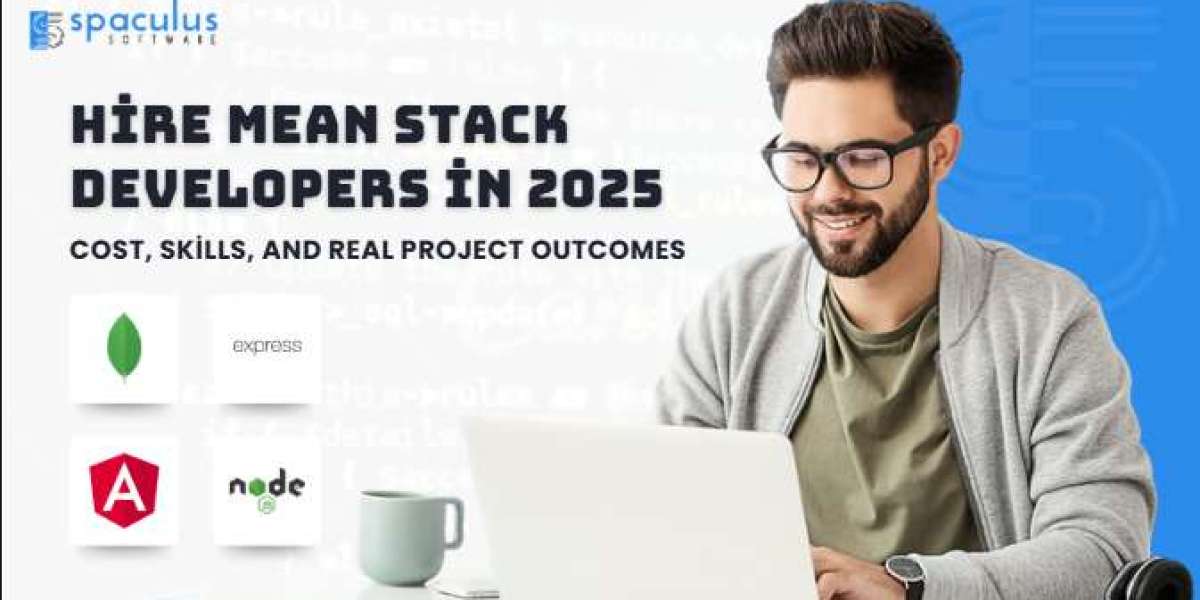Hiring developers in 2025 isn’t about finding someone who claims to know MongoDB or Angular. It’s about finding someone who can get your project off the ground, keep it running, and help it scale—without drowning you in complexity, delays, or half-baked code.
If you're thinking about using the MEAN stack—MongoDB, Express.js, Angular, and Node.js—for your product, here’s what you actually need to know to hire the right person (or team) for the job.
Start with the outcome, not the tech
Before you even write the job post or open a candidate profile, stop and ask yourself: what are you trying to build?
Most hiring mistakes happen because people start with the stack instead of the goal. Saying “we need a MEAN stack developer” is vague. Saying “we’re building a real-time dashboard for sales teams with data stored in MongoDB and a frontend built in Angular” is specific. And it helps you understand exactly what kind of skills you’re hiring for.
There’s a big difference between someone who can build a one-page MVP and someone who can architect a scalable, production-level app. Don’t confuse the two.
What actually makes a MEAN developer valuable in 2025?
Let’s cut through the generic job board jargon.
A solid MEAN developer in 2025 knows how to design clean APIs using Express or Nest.js. They understand how to structure a MongoDB schema so that queries don’t choke under load. On the frontend, they’re fluent in Angular (or Vue/React if you're flexible) and know how to bind forms, manage state, and deal with routing.
But beyond tech, the valuable ones know how to deploy, monitor, and maintain what they build. That means they’re comfortable with Docker, basic CI/CD pipelines, and deploying to platforms like AWS, GCP, or even simple VPS setups. They test their code, track what they push, and write documentation someone else could actually follow.
The great ones can explain their decisions. They don’t just say “I used JWT auth.” They’ll tell you why they avoided cookies in this setup, or how they prevented refresh token misuse. That clarity is worth more than any certification.
Where to find them (and where not to)
If you're looking for someone who can build fast and deliver actual outcomes, GitHub will tell you more than a resume. Look for developers who have real projects with proper documentation—not just clones of tutorials.
Freelance platforms like Toptal, Arc.dev, and Upwork are great if you’re building something short-term like a prototype or internal tool. But you’ll still need to vet them properly. Ask for past client links or deployed demos. If they can’t show you something live, pause.
Agencies and dev shops are worth considering when you need more than one pair of hands or don’t have time to manage the project. Just be clear about who’s coding. Some firms send in senior folks for the intro call and then pass the project to juniors. Ask for a trial sprint, even if it's paid. It’ll save you from wasting months later.
How much should you budget?
This changes depending on region, complexity, and whether you’re hiring full-time, part-time, or just for a few sprints.
In the US, a mid-level MEAN developer costs between $9,000 and $12,000 per month. Senior folks often push toward $15k or more, especially if they bring DevOps or architecture skills to the table.
In Latin America or Eastern Europe, you can find excellent developers for $4,000 to $6,000 per month. In India or Southeast Asia, strong mid-level candidates often fall between $2,500 and $4,000. You’ll find cheaper options too, but that usually means more handholding or technical debt down the road.
If you’re going with freelance or task-based work, pricing tends to be around $500 to $3,500 per feature or sprint, depending on scope and speed.
Whatever your choice, make sure you’re paying for thinking, not just coding. A $4,000 developer who delivers clean code and communicates well is worth more than a $10,000 one who builds fragile systems you constantly need to fix.
Skip the textbook interviews—test what matters
The best way to know if someone can deliver is to ask them to actually build something small.
Give them a feature from your backlog. Ask them to build it in a sandbox environment. Something like: a login form that connects to a MongoDB-backed user model, with basic CRUD operations and authentication in place. You’ll learn more in 2 days of test code than 5 rounds of whiteboard interviews.
Once they submit, review the code yourself—or with help from a trusted dev. Check how they structure files, name functions, handle errors, and document logic. Then jump on a call and ask them to explain the thinking behind their choices.
If their reasoning makes sense, you’re in a good spot. If they can’t justify decisions or they copy-pasted without understanding, you’ll know you need to keep looking.
The real soft skills: communication and pace
Some developers are great at coding but terrible at deadlines. Others disappear for days and drop code at the last minute without explanation.
The ones worth hiring are proactive. They update you without being asked. They log their progress. They raise concerns early. They ask for clarification before wasting time.
Don’t underestimate how valuable this is—especially if your team is remote or spread across time zones. A developer who communicates clearly and consistently is easier to work with, delivers faster, and causes fewer surprises.
What real projects look like
A fast-moving startup hired a MEAN developer to build a product feedback dashboard. Within three weeks, they had a working system: user login, feedback form, data display with filters, and exports. All deployed on a basic VPS with CI/CD setup.
Another client needed to automate CRM data collection. Their developer built a Node.js job that pulled external data, cleaned it, saved it to MongoDB, and generated daily summary emails. It replaced 10 hours of manual work each week—within one sprint.
In a larger project, a dev was hired to scale a growing backend. They refactored the API, added versioning, introduced middleware for auth and rate limits, and added basic testing. They weren’t the cheapest—but the work saved the company from a total rewrite months later.
Start small. Review. Then scale.
Don’t rush to hire someone full-time or commit to 3 months upfront.
Start with a 1- or 2-week engagement. Give them a well-scoped feature. Review their work. See how they handle feedback. If it works, keep going. If it doesn’t, you’ve avoided a long, painful detour.
Use Git from day one. Ask for commit access. Review diffs. Even if you’re non-technical, someone else on your team or a consultant can help. It’s much easier to steer a project early than to fix it once it’s broken.
Mistakes to avoid
Don’t hire just based on location or cost. Don’t chase buzzwords. Don’t assume someone who knows “MEAN stack” actually understands how to deploy, scale, or maintain apps.
Don’t skip contracts, NDAs, or clarity on who owns the code. Don’t expect miracles from people without giving them clear requirements and access to your system.
And whatever you do—don’t wait 30 days to look at their code. Review often. Give feedback. Pay attention.
Final thoughts
In 2025, the MEAN stack is still a solid choice for full-stack apps—especially if you want flexibility, speed, and scalability. But hiring someone who can actually make it work takes more than matching keywords to resumes.
Look for people who understand the whole flow. Who can build fast, think clearly, explain decisions, and work like a partner—not just a task executor.
Test them with real work. Start small. Scale only when it makes sense.
That’s how you Hire MEAN Stack Developers who actually deliver. And that’s how you build software that works.








